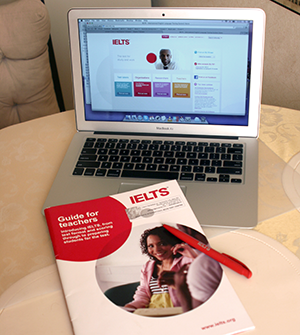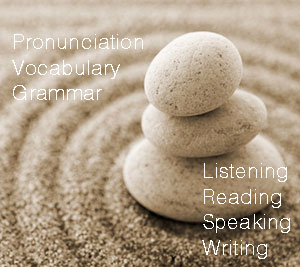 Traditionally, millions of students view IELTS Writing as the most difficult task out of all the four modules. IELTS statistics for 2012 proves that both male and female candidates score about 0.5 less for writing than for other modules. Why does it happen?
Traditionally, millions of students view IELTS Writing as the most difficult task out of all the four modules. IELTS statistics for 2012 proves that both male and female candidates score about 0.5 less for writing than for other modules. Why does it happen?
First, many students are not used to letters, graph analyses or essays in English. They need to study the structure, cohesion markers and style parameters. Second, most people lack the knowledge of less common vocabulary and grammar structures. Third, even those who train hard do not understand examiners’ criteria well enough.
Even IELTS coaches, who train students specifically for this exam, seldom understand in detail each criterion. Personally, I studied and analysed IELTS band descriptors, but it was only after two seminars with IELTS Principal Examiner that I actually grasped their meaning.
Those who want to feel deeper IELTS criteria can take advantage of an excellent course: IELTS-online that explains in detail various strategies and requirements.
IELTS Writing Band Descriptors: Part 1
You can take a closer look at official IELTS Band descriptors and read them in detail. Here I will try just to touch on the most important questions about each criterion. Each descriptor equals 25% of the total score.
Task Achievement
Here examiners will check how well a candidate addressed the task.
1) Is a letter or a graph analysis long enough?
The minimum length is 150 words.
2) Did they answer all the questions required?
A letter must cover all the bullet points in the same proportion. A graph or image description must have an overview (a summary without details) and the analysis of key trends, supported with evidence. If a candidate didn’t mention all bullet points or missed some important features, they will not get more than 5 for Task Achievement.
3) Did they use correct tone?
Before writing, a candidate needs to consider the audience. A letter to a friend can be written in an informal style, but a business letter or an information request needs formal style. A diagram or scheme description requires academic tone. Once, my student wrote to his friend, “In case you have any questions, you can contact me at your convenience“. The sentence itself was correct, but the tone was wrong.
4) Does the letter or Academic part 1 reach its purpose?
At the seminar for IELTS teachers we analysed letters with some inconsistencies in tone, but they still got 6 for Task Achievement because their purpose was clear and understandable.
5) Is there any irrelevant information?
Each sentence in Part 1 must serve its purpose. Students often feel the temptation to add extra details, which is not wise because they can lose the focus. Letters with irrelevant details can’t score more than 6.
Coherence and cohesion
The examiner will check how well a candidate can organise his or her letter or Academic part 1.
1) Is there clear progression?
A letter must have logical structure. Usually it has salutation, a statement of purpose, details and final phrases. A graph/ diagram/process analysis needs introduction, overview and body. Unlike an essay, it doesn’t need a conclusion.
2) Is there a variety of cohesive devices?
A candidate must use different cohesive markers: lexical sets, pronouns, conjunctions, articles and possessive adjectives. At the same time, it is important to use them wisely: over-use or under-use will lower the band (a candidate won’t score more than 6 with slight over-use or under-use, and won’t get more than 5 with a wrong choice or over-use).
3) Are paragraphs adequate?
Both a letter and a graph analysis must be divided into paragraphs. Paragraphs need to follow the approach “one idea-one paragraph”. Separate paragraphs should be used for salutations (in a letter), introduction, overview and body (in Academic Part1).
Lexical Resource
This criterion aims to check candidate’s vocabulary choice.
1) Does a candidate paraphrase the task?
Some students repeat words from the task, which is wrong. They need to paraphrase: use synonyms or other parts of speech. Variety of lexis is the key to get a higher band – a candidate needs “a sufficient range of vocabulary” to score 7.
2) Is there less common vocabulary?
All language learners have “passive” and “active” vocabulary. A variety of less common lexical items will increase the band score, e.g. “drop me a line” instead of “write me a letter” in a friendly letter or “prices plummeted” instead of “prices fell” in a graph analysis.
3) Are there mistakes in collocation or word choice?
If a candidate makes only a few collocation mistakes, they can still score 7 for lexical resource. If they produce more errors, that will lower the mark to 6, or even 5.
4) Are all the words spelled and formed correctly?
Examiners will analyse both the quantity and the quality of spelling mistakes. Are mistakes frequent? Do they impede the reader’s understanding? If the errors do not distort the meaning, a candidate can still get 6. If examiners can’t understand what was meant, a candidate will not score more than 5.
Grammatical range and accuracy
Here examiners check grammar knowledge.
1) Does a candidate use a variety of structures?
A student can show good knowledge of grammar using not only simple sentences, but different types of complex sentences (with relative pronouns that, who, because, where, which, when, if etc.). It may be wise to use Passive Voice (but not over-use), Conditional sentences, Modals, Complex Object, Inversion, Participial constructions.
2) Are there many grammar mistakes?
Same as with lexis, the quantity and the quality of grammar errors matter. A letter or Academic Part 1 with few mistakes that do not affect understanding can still score 7 or even 8. Frequent mistakes that impede communication will lower the mark to 5 or less. Punctuation is a part of grammar, so a student needs to revise it while preparing.
IELTS Writing Band Descriptors: Part 2
IELTS Part 2 descriptors slightly differ from the first part. Examiners will use them to check how well a student can write an essay.
Task response
1) Are there enough words?
There must be at least 250.
2) Does the essay address all parts of the task?
A question may have from one to four parts. Each of them must be addressed as fully as possible. Consider the task “Some people think that wild animals should not be kept in zoos. Others believe that there are good reasons for having zoos. Discuss both these views and give your own opinion“. An essay about this topic should cover three parts: 1) Reasons not to keep animals in zoos 2) Advantages of zoos 3) Own opinion. If a candidate forgets to cover even one part out of three, they won’t get more than 5 for Task response.
3) Is writer’s position clear enough?
A candidate can NOT change his or her opinion while writing the essay, otherwise, they won’t score more than 6.
4) Are arguments and examples good enough?
Some students use irrelevant examples or weak arguments, thus getting not more than 6.
Coherence and cohesion
This criterion is almost identical to Part 1, so an examiner will check the same questions about progression, cohesive devices and paragraphing.
The only difference is that in order to get 7, a candidate should use a topic sentence in each body paragraph, an introduction and a conclusion. If paragraphs are not always logical, an essay will not score more than 6.
Lexical Resource and Grammatical Range and Accuracy
These Task 2 criteria are absolutely identical to Task 1 descriptors, so, examiners will check the same issues that I described above. Variety is of crucial importance, both of vocabulary and grammar structures.
What conclusions could be drawn? An IELTS coach can analyse his or her students’ writing for all the IELTS criteria to identify the weakest ones. That way students will concentrate all their efforts on bridging the gaps of knowledge and will be able to improve their reasoning and writing skills.
 Русский
Русский English
English



